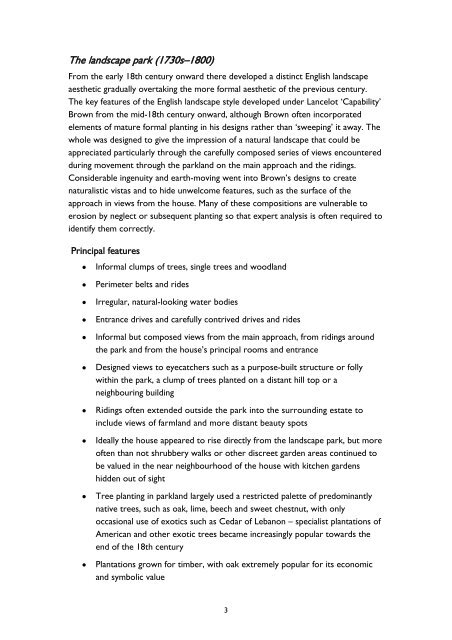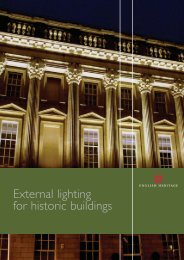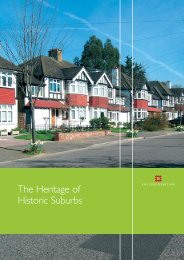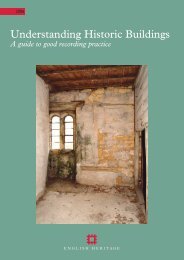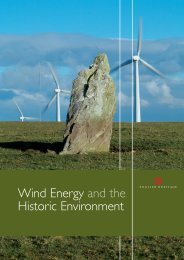Understanding historic park designs - HELM
Understanding historic park designs - HELM
Understanding historic park designs - HELM
Create successful ePaper yourself
Turn your PDF publications into a flip-book with our unique Google optimized e-Paper software.
The landscape <strong>park</strong> (1730s–1800)<br />
From the early 18th century onward there developed a distinct English landscape<br />
aesthetic gradually overtaking the more formal aesthetic of the previous century.<br />
The key features of the English landscape style developed under Lancelot ‘Capability’<br />
Brown from the mid-18th century onward, although Brown often incorporated<br />
elements of mature formal planting in his <strong>designs</strong> rather than ‘sweeping’ it away. The<br />
whole was designed to give the impression of a natural landscape that could be<br />
appreciated particularly through the carefully composed series of views encountered<br />
during movement through the <strong>park</strong>land on the main approach and the ridings.<br />
Considerable ingenuity and earth-moving went into Brown’s <strong>designs</strong> to create<br />
naturalistic vistas and to hide unwelcome features, such as the surface of the<br />
approach in views from the house. Many of these compositions are vulnerable to<br />
erosion by neglect or subsequent planting so that expert analysis is often required to<br />
identify them correctly.<br />
Principal features<br />
• Informal clumps of trees, single trees and woodland<br />
• Perimeter belts and rides<br />
• Irregular, natural-looking water bodies<br />
• Entrance drives and carefully contrived drives and rides<br />
• Informal but composed views from the main approach, from ridings around<br />
the <strong>park</strong> and from the house’s principal rooms and entrance<br />
• Designed views to eyecatchers such as a purpose-built structure or folly<br />
within the <strong>park</strong>, a clump of trees planted on a distant hill top or a<br />
neighbouring building<br />
• Ridings often extended outside the <strong>park</strong> into the surrounding estate to<br />
include views of farmland and more distant beauty spots<br />
• Ideally the house appeared to rise directly from the landscape <strong>park</strong>, but more<br />
often than not shrubbery walks or other discreet garden areas continued to<br />
be valued in the near neighbourhood of the house with kitchen gardens<br />
hidden out of sight<br />
• Tree planting in <strong>park</strong>land largely used a restricted palette of predominantly<br />
native trees, such as oak, lime, beech and sweet chestnut, with only<br />
occasional use of exotics such as Cedar of Lebanon – specialist plantations of<br />
American and other exotic trees became increasingly popular towards the<br />
end of the 18th century<br />
• Plantations grown for timber, with oak extremely popular for its economic<br />
and symbolic value<br />
3


